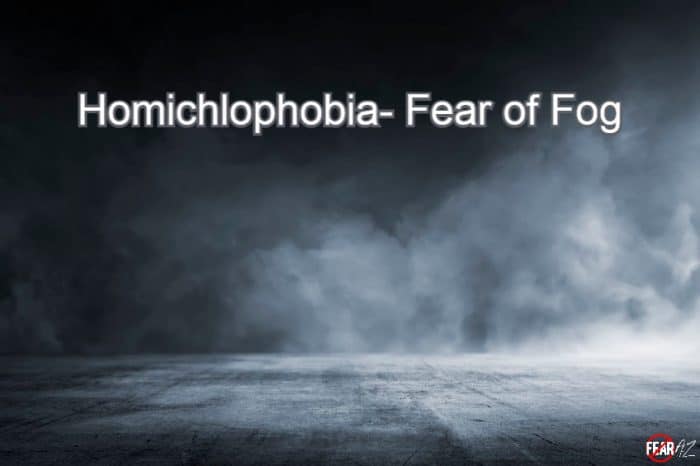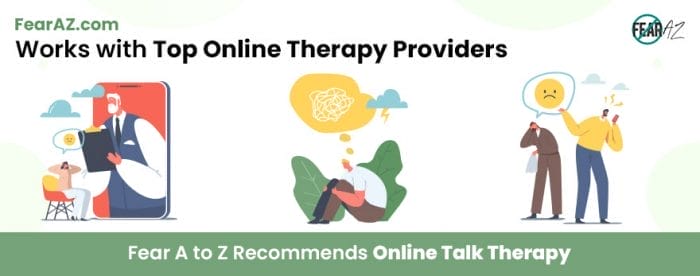Share This Article
The Fear of Fog, or Homichlophobia
Fog or mist can be creepy, not knowing what is beyond your view. Does the sight or even the thought of fog make you uneasy?
Do you find your fear irrational? Do you experience an increased heart rate, sweating, muscle ache, or trembling when experiencing or thinking about fog?
As strange as it may sound, you’re not alone in your fear of fog. Homichlophobia, or the fear of fog, is a rather common phobia. It’s also known as nebulaphobia and is described as the intense and persistent fear of fog.
Although it’s true that homichlophobia is considered to be an irrational fear of fog, those with such a phobia typically experience a jump in their pulse rate, along with excessive sweating, shivering, and in extreme cases, panic attacks.
So, how do you overcome homichlophobia? Are there any treatments? Read on as we take a deeper look into what homichlophobia is, its causes and triggers, common symptoms, and the different treatments.
The first step towards handling this fear is to understand why you have it.

What Is Homichlophobia?
Homichlophobia, or nebulaphobia, is classified as the irrational fear of fog. While there is no specific reason for homichlophobia, for some, the fear can be triggered due to unpleasant past experiences related to fog.
There is no single reason why homichlophobia occurs in some and not in others. Although fear can be triggered by unpleasant incidents in the past involving fog, this is not always the case.
In certain people, homichlophobia can be triggered due to prolonged exposure to movies and television shows that depict frightening or traumatic events taking place in the darkness or fog, or circumstances where visibility is low. Moreover, foggy weather has been one of the most common reasons for road accidents and fatalities.
Hence, reading about people having an accident while driving, or experiencing it firsthand, can trigger or develop homichlophobia in some. However, genetics and those with a family history of mental disorders are at a higher risk for developing homichlophobia as well.
Homichlophobia is considered to be a form of social anxiety disorder and is classified as an anxiety disorder in the Diagnostic and Statistical Manual of Mental Disorders (DSM-V). According to the DSM-V, those who experience fear or phobias that are categorized as anxiety disorders may undertake extra efforts to avoid situations or places that may trigger them. So, someone who has homichlophobia might completely avoid going out altogether during foggy weather, or wait till the fog has cleared before going out. Some might even prefer to live in an area that has a tropical or a warm climate so they don’t have to experience fog.
Symptoms of Homichlophobia
People suffering from homichlophobia commonly experience a high degree of anxiety just by thinking about fog, let alone seeing it. In fact, for those who have a high degree of fear of fog, their anxiety may turn into a full-blown panic attack. Let’s look further at the physical, mental, and emotional symptoms of homichlophobia.
Mental/Emotional Symptoms of Homichlophobia
The mental and emotional symptoms of homichlophobia may include:
- Uncontrollable fear or anxiety
- Panic attacks
- Withdrawing and self-isolation
- Feeling disconnected from people around you
- A feeling of guilt, shame, or self-loathing
- Anger and frustration either with oneself or others
- Irritability
- Difficulties in concentration
- Fear that you are losing control over your life
- Feeling dreadful
- Feeling dejected and hopeless
Physical Symptoms of Homichlophobia
Some of the common physical symptoms of homichlophobia are:
- Excessive sweating
- Shivering or trembling
- Hot flushes
- Chills all over the body
- Muscle pain
- Dizziness
- Tightness in the chest, which can cause difficulty in breathing
- Confusion or disorientation
- An increased heartbeat
- Nausea or vomiting sensation
- A feeling that you are going to faint
What Can I Do to Help Myself with Homichlophobia?
Homichlophobia, if left untreated, may cause one to become irrational. Those suffering from the fear of fog may find themselves feeling left out. They may feel uncomfortable discussing their problems with others, or worry that others may not acknowledge them or perceive them as strange. If you’re suffering from homichlophobia and feel it’s interfering with your daily activities, it’s time to get help.
Self-Help for Homichlophobia
In case you don’t want to or can’t afford professional therapy, self-help might be the best way to overcome homichlophobia. Start by taking care of yourself. Taking care of oneself involves thinking about your thoughts, anxieties, and what causes or triggers them. You should also try to read about and understand your fears and anxieties deeper, and figure out coping methods that might work best for you.
Exercise and meditation are also believed to help those in overcoming their fears. Cardiovascular exercises and yoga postures have been proven to help many divert their thoughts towards something more productive and calming. This way, they can get rid of distressing thoughts and focus on something that generates positive energy.
Professional Help for Homichlophobia
For those who wish to seek professional help to treat homichlophobia, several options are available. Let’s take a look at a few of them in more detail.
Exposure Therapy
Exposure therapy is one of the most common methods of overcoming phobias. It involves the therapist repeatedly exposing the patient to the things they fear or have a phobia towards. This is done in a safe and controlled environment under your medical professional’s supervision. The process aims to desensitize the patient to their fears, as theoretically, the more one is exposed to something they fear, the less it will bother them over time.
Cognitive Behavioral Therapy (CBT)
Cognitive behavioral therapy is one of the most common and well-known methods employed by therapists to treat clients. Under this method of treatment, therapists work with patients to uncover why they think, behave, or feel a certain way with respect to a fear or phobia they are facing.
Dialectical Behavior Therapy (DBT)
Though the DBT method is usually used in the treatment of patients with borderline personality disorders, it’s also useful for helping those with various phobias. Under DBT, therapists employ various techniques including mindfulness meditation to cope ahead. This involves asking patients to close their eyes and imagine scenarios where they are exposed to their fear and what they would do to overcome it. The half-smile technique may also be utilized, where patients are asked to think about their fear while slightly raising the corners of their mouth. This methods helps patients avoid the painful thoughts associated with their fear.
How to Avoid Homichlophobia Altogether
If you wish to avoid facing your fear of fog, then the best solution is to avoid traveling or stepping outdoors when fog is present. Wait till the sky clears and visibility increases. Or, if you can, move to a place where the climate remains warm throughout the year and you don’t have to experience foggy weather.
In Conclusion
While it’s true that homichlophobia is considered to be an irrational fear, it’s not something to be ashamed of. Many of us have different phobias, and since treatments exist, homichlophobia can be overcome with time. So, don’t worry. Accept your fears and stay positive.




